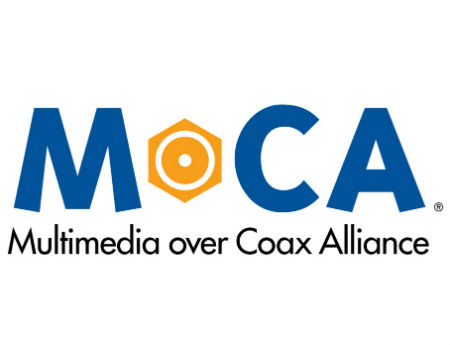MoCA Eyeing Supersonic Speeds: Sources

It’s clear that ISPs are addressing the need for speed by pumping gigabit broadband to the home, with multi-gigabit residential services on the horizon, but an organization that uses in-home coax as a high-octane IP backbone is also pursuing next-generation technologies.
The Multimedia over Coax Alliance (MoCA) is developing a new spec that aims to support coax-based, in-home net throughputs of 2.5 Gbps, according to sources familiar with that work as well as from evidence that emerged at recent industry tradeshows.
The next version of the platform, dubbed MoCA 2.5, will target performance metrics of 2.5 Gbps, and the specs on how that will be accomplished are expected to be announced by mid-2016, according to a person familiar with MoCA’s technology roadmap. MoCA is also looking at an even faster spec, to be called MoCA 3.0.
MoCA has not announced details about its roadmap, though its first-ever full-time president, Charlie Cerino, did note in a statement issued today that the organization is making progress on “our next generation specifications” that “will solidify MoCA’s position in home networking for years to come.”
Evidence of what’s on the horizon for MoCA has been referenced in recent tradeshow presentation materials. For example, at the SCTE Cable-Tec Expo in October in New Orleans, Arris presented a presentation on the future of the home network that referenced MoCA 2.x and 3.0, and a capacity target of at least 2.5 Gbps. A Cable-Tec Expo presentation from CableLabs also referenced MoCA 2.5 with a requirement to support 2.5 Gbps, noting that working devices are expected to be available for plugfests within 18 months.
The documentation from CableLabs also showed that future MoCA 3.0 technology could require supported data rates of between 2.5 Gbps to 10 Gbps and become available in three to five years. That would put MoCA 3.0 in-line with the kind of access network capacity envisioned by DOCSIS 3.1 (up to 10 Gbps downstream, and at least 1 Gbps upstream). That same document also mentions work that’s underway to ensure that future MoCA technology can coexist with DOCSIS 3.1, particularly from a spectrum-usage standpoint (CableLabs noted that those coexistence requirements were issued by MoCA, and given to the Society of Cable Telecommunications Engineers).
If the first of those specs, MoCA 2.5, is indeed eying such speed metrics, it would blow the current version, MoCA 2.0, out of the water. MoCA 2.0 currently delivers baseline net data rates of 400 Mbps and 800 Mbps (with bonding), and 1 Gbps in point-to-multipoint mode. Earlier this month, MaxLinear, a chipmaker that bought MoCA specialist Entropic Communications last April, introduced a third-generation MoCA 2.0 system (the MxL3705) that supports 1.2 Gbps of aggregate MAC throughput for up to 16 “nodes” on the home network.
The smarter way to stay on top of the multichannel video marketplace. Sign up below.
And 2.5 Gbps would seem like extraordinary overkill with respect to today’s in-home data demands. But it would future-proof MoCA for the long-term as MSOs roll out 1-Gig services to the home today with DOCSIS 3.0 and targeted FTTP, and later chase down multi-gig services that will be enabled by DOCSIS 3.1.
The next version of MoCA would also come into play as the use of video streaming continues to grow, including bandwidth-heavy 4K video, a flood of new devices connect to home networks, and as consumer needs continue to lean on whole-home gigabit WiFi systems with multiple access points that utilize MoCA as their core in-home IP data backbone. MoCA could also be looking to bulk up amid the potential for competition from rival technologies and specs such as G.hn.
